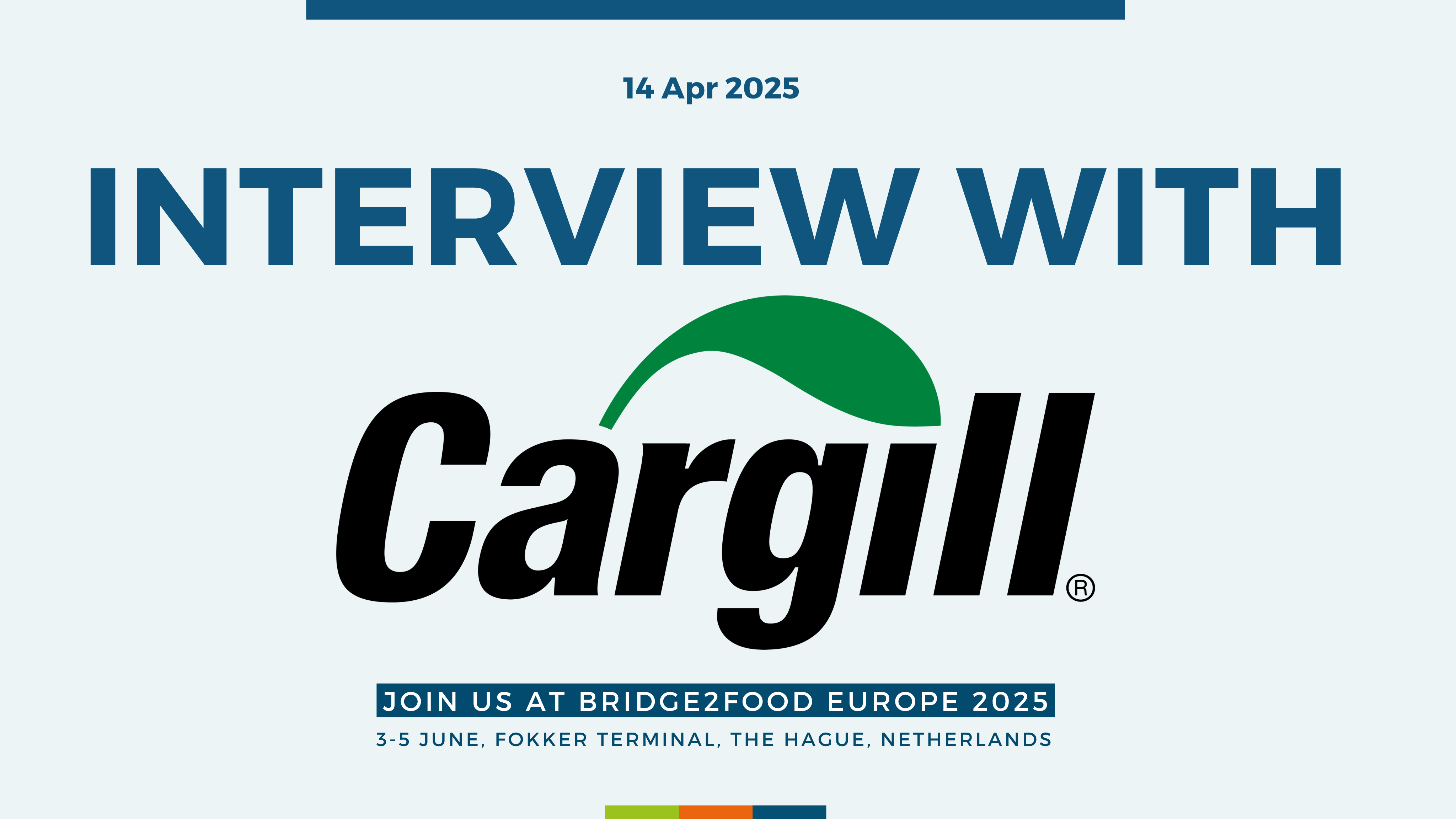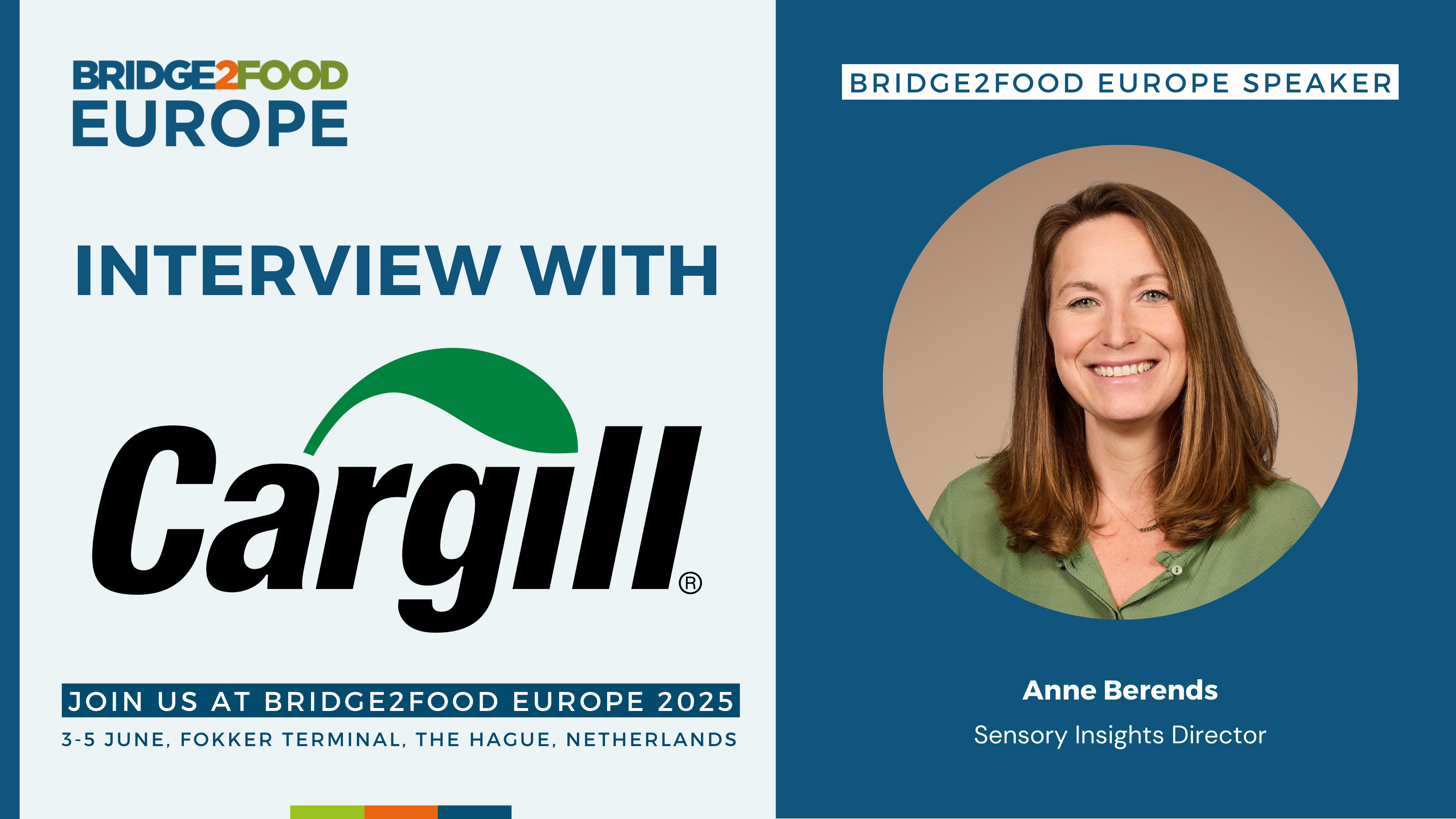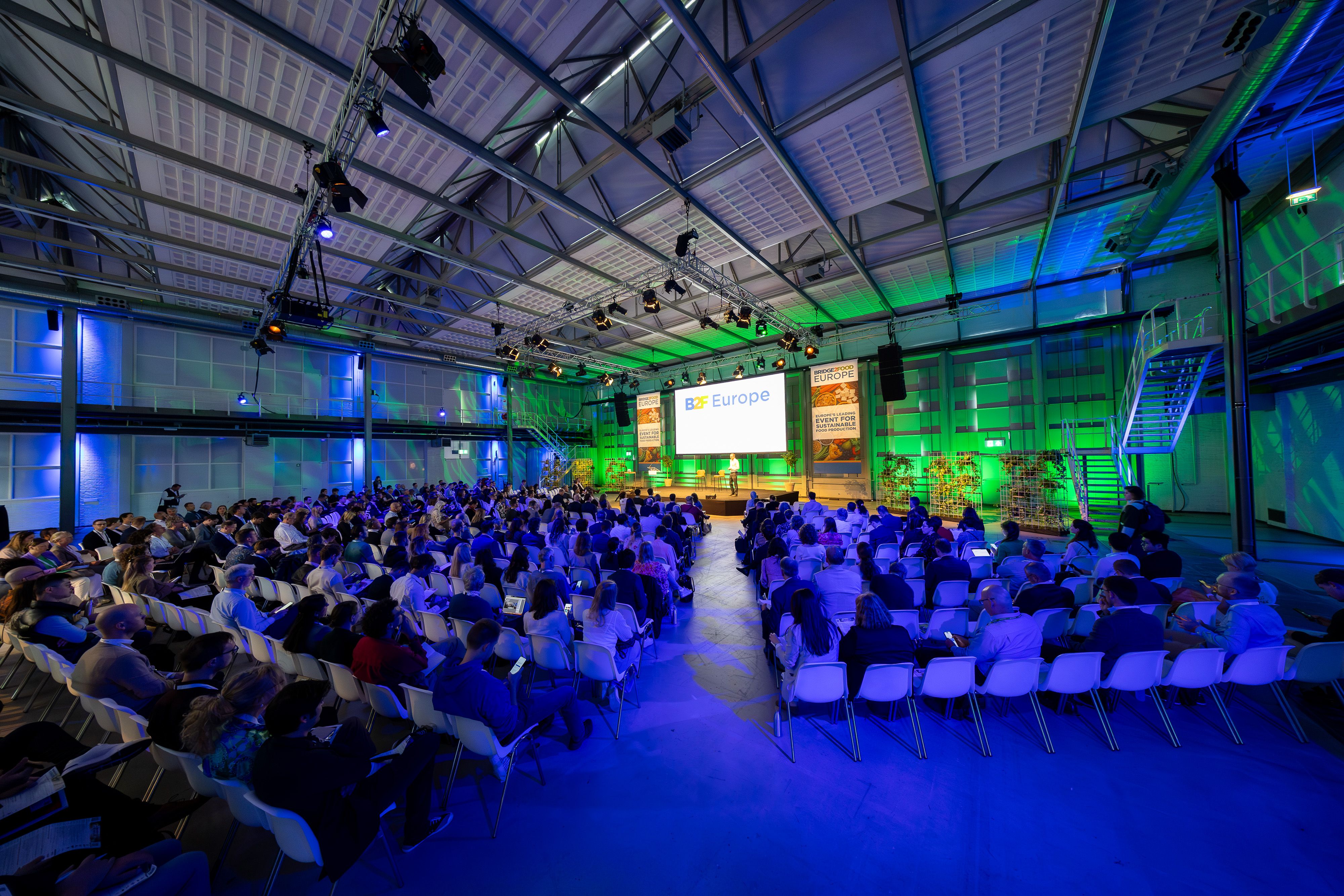

What made Cargill decide to participate in Bridge2Food Europe 2025, and what do you see as the biggest value of being at the event?
Cargill is historically a company that values connections throughout the value chain and has grown through them. We believe we all achieve more by working together with our customers and partners.
With protein demand expected to rise 70 percent over the next 30 years (World Resources Institute 2019), Cargill remains committed to co-creating with our customers solutions using animal and alternative proteins to feed the world safely, responsibly and in a more sustainable way. Commercialising new alternatives requires many waves of new-and-improved versions. To be able to do that we need to work closely together with our customers. Events like Bridge2Food Europe 2025 help foster and grow those critical connections.
In your view, what is one of the most important changes in consumer sensory expectations when it comes to plant-based foods? How can brands respond to this shift to deliver a better taste and texture experience?
Consumers are looking for high-quality, more sustainable, and nutritious protein options that align with their values. We see huge opportunities for development and discovery in this space. In the early days of the category, many products made it to market quickly, but not all met consumer expectations.
One of the biggest challenges in protein innovation is achieving the right balance of taste, texture, and nutrition without compromising on affordability. Many plant proteins have inherent off-notes, and achieving the right mouthfeel can be complex. Now, we see a new wave of innovation centred on refining formulations, enhancing sensory appeal, and addressing clean-label demands.
In addition, alternative protein consumers are no longer only vegetarians and vegans, many are flexitarians enjoying both animal and alternative proteins. These consumers are not looking purely for meat replacers, they are also open to exploring protein solutions with health benefits without the meat like status.
Cargill’s presentation explores the connection between sensory perception and emotions in plant-based foods. Why is understanding this emotional journey so critical for brands looking to succeed in this space?
Today’s consumers are not simply looking for a product, they are looking for experiences that fit their lifestyles and meet their desires. Today, there are so many plant-based options on the shelf that consumers can be “taste-perfectionists.” This means we need to innovate great tasting products without compromising on health, wellness or ethical values. In fact, 80 percent of consumers repurchase a product because of its sensory appeal—smell, flavour or texture (Cargill Proprietary Heartbeat™ Insights 2024). We want to do all we can to ensure that a consumer’s first experience produces that perfect sensory moment, but if it doesn’t, we also want them to know there are many other options to choose from!
For the food industry, staying ahead in this fast-moving market requires constant innovation to meet evolving expectations. Sensory science plays a pivotal role in that innovation by translating human emotional reactions into actionable clues for product development.

Cargill works closely with brands to create products that deliver great sensory experiences. From your perspective, what are some key areas where Cargill is driving innovation in taste and texture?
At Cargill we stay on top of the new trends in meat and dairy alternatives. At Bridge2Food Europe 2025, we expect to feature several next-generation prototypes such as protein powered Mediterranean Mycobites and vegan tuna spread as well as a plant-based cocoa drink and plant-based alternative to cheese highlighting innovations like protein fortification and better rollability.
Cargill is continuously researching ways to enhance the sensory appeal of plant-based foods. Is there a recent discovery, innovation, or news you’d like to share with us?
Cargill’s ongoing consumer insights and sensory research is showing more strongly than ever before that “one size does not fit all” for the alternative protein market.
Personalisation is necessary to drive innovation that matters in this category. For example, vegans might need different products than vegetarians or flexitarians because they are comparing different benchmarks. A flexitarian has the flexibility to compare alternative proteins with a meat product, whereas the vegan will only compare with a plant- based source of protein. Good market segmentation incorporating sensory personas is critical to successful innovation in the long run in this space.
At Cargill, our knowledge, access to ingredients across the supply chain, and expertise in traditional proteins allows us to create new solutions aligned to this variety of consumer needs.
With so many experts gathering at Bridge2Food Europe 2025. What types of partnerships are Cargill most excited to build at the event?
Cargill invests in partners that align with our long-term growth objectives to turn “imagine if” into “we can” on a global scale. Our investments are considered the starting point for long-term, truly strategic partnerships which enable even more nutritious diets.
Cargill's advantage as an investor is access to expertise in areas such as supply chain, regulatory, R&D and procurement. Additionally, there is an opportunity to access a global network – which many start-ups need to scale their businesses.
Thank you for your time! We’re excited to welcome Cargill to Bridge2Food Europe 2025—any final thoughts before we see you there?
Meat and dairy alternatives are a complementary solution to nourish the world. They represent a rapidly changing market with exciting growth opportunities, but still a lot of hurdles and complexity when it comes to aspects like taste, texture, economies of scale and affordability. At Cargill, we continue to transform to a more consumer centric organisation that can help address real consumer needs in this space, while also helping our customers put tastier solutions on consumers’ tables. We are excited about an even more nutritious and delicious future ahead.


